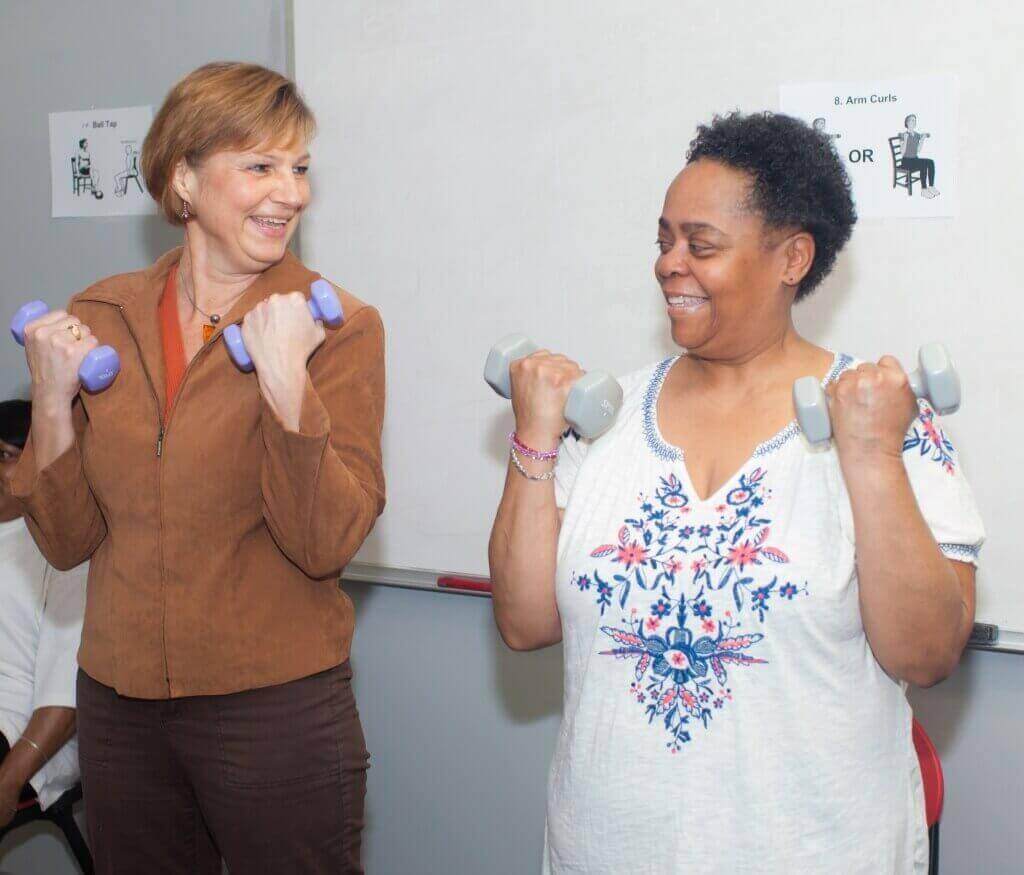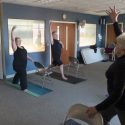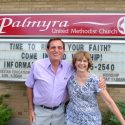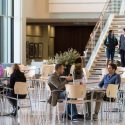Helping seniors stay active, independent through fitness

Kim Gretebeck, assistant professor of nursing at UW–Madison, and Pamela Bracey demonstrate the exercise program Gretebeck has developed for senior citizens. Todd Brown
We all know that exercise is good for us. The human body is just meant to move, and that’s true even when old age slows us down. In fact, regular exercise does more than keep older adults healthy. It also maintains their independence.
Yet becoming active late in life comes with a unique set of challenges. While a sedentary 25-year-old could buy a pair of running shoes one day and hit the pavement the next, it is not that simple for an octogenarian who might have caregiving responsibilities for a spouse, physical weakness or limitations due to chronic health conditions. It is harder still when that person lives in a rural community without sidewalks or a gym around the corner.
University of Wisconsin–Madison Assistant Professor Kim Gretebeck set out to develop an accessible exercise plan tailored to older individuals who want to stay healthy and avoid physical deterioration that could prevent them from living independently. Gretebeck worked with nurses, physicians, exercise physiologists and physical therapists to develop a program called Physical Activity for Life for Seniors, or PALS.
The program is currently offered by Aging Disability Resource Centers in Landglade, Marathon, Lincoln, Eau Claire, Waukesha, Milwaukee and Wood counties and by the North/Eastside Senior Coalition in Dane County. Gretebeck says the research team is planning broader distribution of the program, and centers in other counties are already on a waiting list to be future sites.
The program features a group exercise circuit with trained leaders and is built around exercises specifically geared toward maintaining independence. “We have exercises that encourage lifting arms above the head, and that’s for opening cupboards,” Gretebeck says. “We also have exercises related to strength and flexibility. The exercises are really functional in nature.”
Best of all, PALS does not require expensive equipment such as treadmills or stationary bikes. The PALS circuit equipment includes balls, steps, small hand weights and chairs. Most PALS exercises can be adapted to be done at home with minimal, inexpensive props including soup cans and stretch bands.
That was intentional. While Gretebeck’s team is piloting the project with community organizations throughout the state, the long-term plan includes making PALS a home-based program. That makes it easier for individuals to maintain a fitness regimen even if they live in neighborhoods without sidewalks or lack the flexibility to attend a scheduled class. Gretebeck notes that participants love the group dynamic—so much that many continue to meet as a group for other activities besides exercise—but they also appreciate having options for continuing their program on their own.
“Maintaining regular physical activity is where the long-term benefits are,” Gretebeck says. “That’s how we keep them independent.”
Subscribe to Wisconsin Ideas
Want more stories of the Wisconsin Idea in action? Sign-up for our monthly e-newsletter highlighting how Badgers are taking their education and research beyond the boundaries of the classroom to improve lives.



